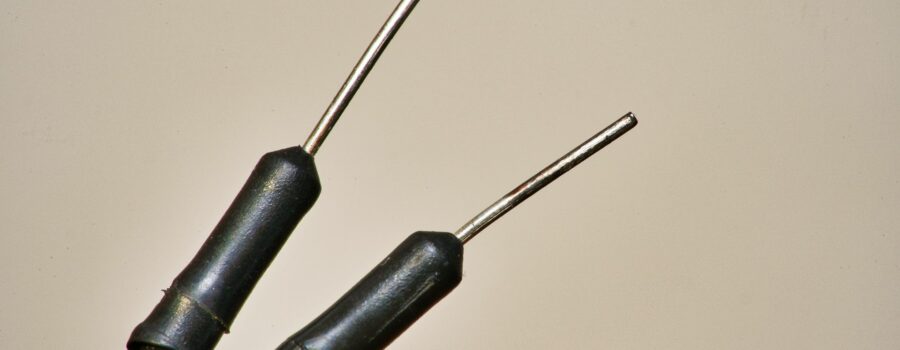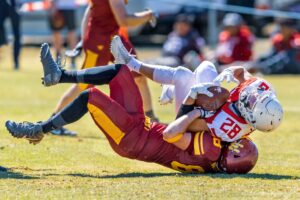We all have tendencies to be optimistic or pessimistic about an event. Sometimes our level of optimism varies; with our level of energy, enthusiasm, the task at hand and even the day of the week affecting our perception. Our thought patterns have a great deal to do with whether or not we think as an optimist or pessimist.
Being optimistic does have its benefits. Being pessimistic generally does not have too many; unless you like feeling down and being negative. My goal is not turn every person I meet into an optimist; however I would like my athletes to learn some of the tricks of the natural optimist. This article introduces you to some of the benefits of being an optimistic minded athlete and how to begin to shape your thinking.
I am going to discuss the 3 P’s of confidence and competence: Personalization, Pervasiveness, and Permanence. As I discuss the 3 P’s I will compare and contrast the optimist and the pessimist take on the 3 P’s. The 3 P’s dictate whether or not you become an optimist or pessimist.
1. Personalization refers to an athlete taking responsibility for things that are under their control, while not blaming themselves for aspects of their performance that are beyond their control. How an athlete personalizes their performance has a great deal to do with their ability to maintain confidence, maintain motivation and perform consistently.
The optimistic athlete owns their successes. This means that they take credit for their success and enjoy it. This does not mean that they gloat and brag; instead it means honestly taking credit for success and enjoying a win or good performance. When it comes to setbacks or losses, the optimist is good at understanding what part of the setback or loss was in their control and own them; even better they are good at not taking credit or owning things that were not in their control.
The pessimistic athlete disowns their success. They defer the success to things such as luck, a lucky break or the other team had a bad day. The pessimist tends to take ownership of setbacks and losses and looks at them as a personal character flaw. Basically they see themselves as the mistake or the loss – they personalize it, take it to heart and see themselves as “bad”, “horrible”, or in a negative light. Pessimists make it worse by attributing their failures to their own personal inadequacies. When the pessimist does this they shoot down their own confidence, experience a drop in motivation and consistent performance goes down the tubes.
2. Pervasiveness refers to the degree to which an athlete believes that the cause of their successes and failures will generalize to all areas of their lives.
Optimists make global attributions for their successes. This means that they see success happening in all areas of their life and that they are a successful person. They believe they will succeed. Even more importantly, the optimist makes specific attributions (reasons) for their failures. This means that the optimist limits their failures to a specific instance and point in time (one play, one at bat, one practice, or one game). They limit how they let a mistake/loss affect them; they mentally “box it in”
Pessimists on the other hand limit their view of success. They view success as a one time event and in only one area. The pessimist narrows the success to just one event or time period and does not believe that it will become a larger part of their life. The biggest mistake they make is perceiving mistakes and losses as indicative of their overall ability. This means they see mistakes and failure as a regular part of themselves and expect more mistakes/losses in their lives.
3. Permanence refers to the idea that success will become a regular part of the athlete’s life.
The optimist regularly thinks they will play or perform well and that they will win. The optimist visualizes themselves succeeding, they know deep down that success will come again and they desire it. Regarding mistakes or losses, the optimist perceives them as a one time event, or fluke. Their thinking sees the mistake, quickly analyzes it for something to learn from, drops it and goes back to focusing upon success. The optimist programs themselves for success.
The pessimist sees success and winning as a fluke – just a one time thing. They see mistakes and failure as a consistent part of their performance. Pessimists focus on the bad outcome and spend their time worrying about what could go wrong or not playing well. They program themselves to fail.
Now that you understand how an optimist and a pessimist differ in their thinking lets take a look at how you can be more optimistic in your day, increase your own confidence and increase your own motivation.
1. Actively use positive self talk and eliminate any negative self talk. Optimistic athletes don’t berate or nag themselves they talk up. Be positive, be kind to yourself and focus on what you need to do.
2. Let yourself gain confidence from adversity. Tap your memory to remind yourself of what you did to get here, what you have overcome, the hard work you have put in and your commitment. You are tough, you work hard, you bounce back and you like pressure.
3. You are confident, you talk positively to yourself, your teammates and your coach. You are a problem solver, seeking solutions and learning from mistakes. You focus on your strengths and stay positive even in the heat of moment.
4. You frame your performance in the proper perspective. Sport is a part of your life; your life is not sport. If you win you accept it, own it and add it to your confidence bank account. If you lose, you frame it properly, learn from it and move forward.




